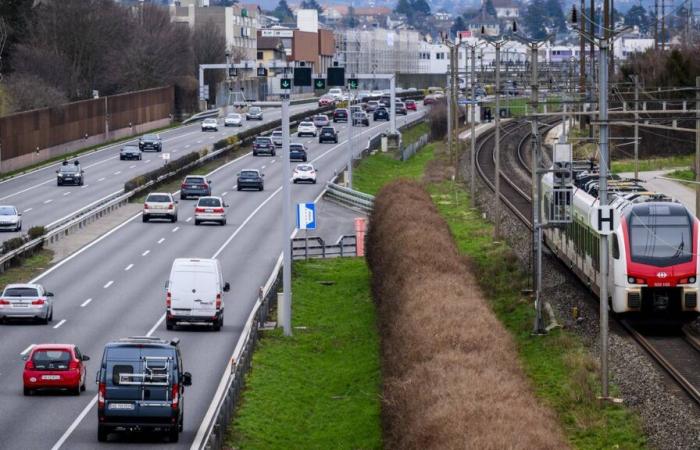The explanation
Highway widening: the vote in three questions
Published on October 24, 2024 at 2:20 p.m. / Modified on October 29, 2024 at 11:37.
What is the object?
The Confederation wants to reduce bottlenecks on six motorway sections, including the A1 between Le Vengeron and Nyon, the only one in French-speaking Switzerland. An amount of 4.9 billion francs is planned, financed via the fund for national roads and urban traffic.
Who is for it?
Apart from the Federal Council, we find among the supporters: The Center, the PLR and the UDC. The yes camp also includes organizations close to economic circles, such as USAM or EconomieSuisse, and those representing the automobile sector, like the TCS. Their arguments: the project would make traffic more fluid and secure.
Who is against?
Opponents include the Socialist Party, The Greens and the Green Liberals. Associations and NGOs committed to defending the climate and the environment, such as ATE or Pro Natura, are also campaigning for “no”. Their arguments: too expensive, the project would eliminate areas, particularly agricultural, and would ultimately generate more traffic, traffic jams, pollution and noise.
An abandonment of the train
A policy which seems fruitful, since the volume of traffic has stagnated, or even decreased, for around ten years, notes Yves Delacrétaz, also former head of planning for the General Directorate of Mobility of the canton of Vaud and former director general of the Geneva Canton Transport Office. The trend is observed in cities but also on the Swiss Route (RC1) where traffic has fallen by 40% in 17 years.
The widening of the A1 would also be “counterproductive from the point of view of traffic management in Geneva”, believes the author of the study. The additional volume of traffic coming from the canton of Vaud would have the effect of saturating the Geneva bypass motorway.
In Sunday Morningwho was able to consult the study exclusively, Yves Delacrétaz further argues that such an infrastructure, if it is built, will “self-generate its own traffic” and because of a “reverse” modal shift, namely commuters who leave the train to return to the car. “Going against the grain of climate objectives,” he adds.
“An impact on the villages”
On the Coppet junction side, the widening of the A1 would cause “a lot of transit traffic” for the municipalities of Commugny, Tannay, Mies and Coppet, while the Nyon junction would see an increase in traffic “from 35 to 40%.” This would essentially load “a countryside network, crossing in particular the villages of Crassier, Borex, Signy-Avenex and Eysins”.
For the supporters of this enlargement, however, namely the Federal Council, Parliament, the cantons and the bourgeois camp, these measures would have the effect of eliminating bottlenecks and easing traffic congestion. They believe that smoother traffic on the highway would reduce the current avoidance traffic in surrounding towns and communities.
In Sunday morning, Mauro Poggia (MCG/GE) reacts: “The problem with these studies is that they are based on projections. However, no one knows what modes of transport and mobility will be like tomorrow. Between teleworking, autonomous vehicles and the use of highways by public transport, a lot can change.”






